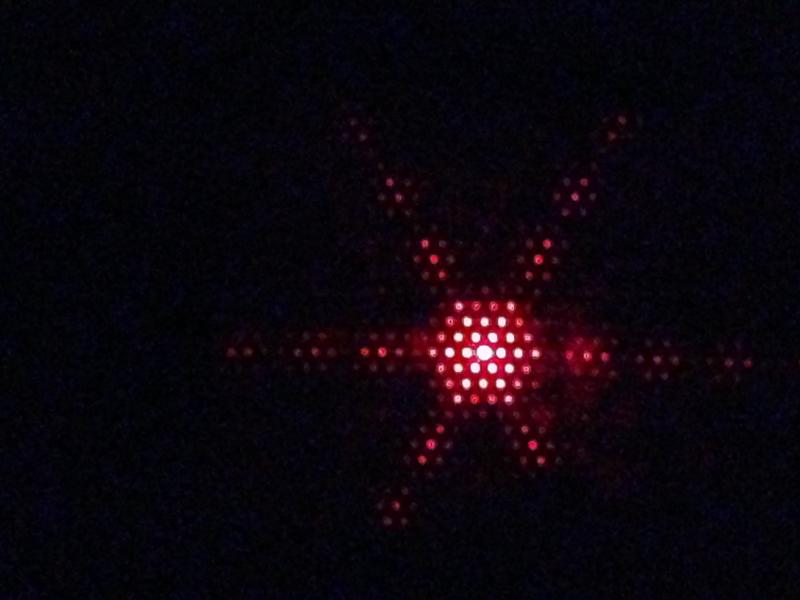The Problem with Diffraction Gratings
Posted

What’s not a diffraction grating?
Nothing. Let’s talk about why.
It’s happening somewhere in the world this very moment – a professor is introducing diffraction by pulling out some mystical square out of some worn-out beaten-up useless-looking box. They show it to the class and then hold it in front of a laser and suddenly the beam suddenly splits into many points (a so-called diffraction pattern). Meanwhile all the students, if they’re awake enough to care, start wondering what could be so magical about this hidden treasure. Clearly, it’s special since it’s been seemingly passed down from professor to professor over millennia.
Wrong.
Nothing is special about the diffraction grating. The truth, and I personally believe this is where all lectures about diffraction should start, is that everything produces a “diffraction pattern”. For example, let’s examine this high-precision optical carpet that I used to set up a diffraction experiment in my apartment.
Experimental Design
Figure 1: Precision-machined optical carpet.
Results
Figure 2: Before the scarf is added to the optical path (Left) and after the scarf is added to the optical path (right). When the scarf is included, light from the laser spot is diffracted outwards.
Let’s try something else. Here’s a coffee-stained version of K&R’s seminal work: The C Programming Language.

Figure 3: Diffraction through the pages of a book
Surely some random piece of trash I found on the ground couldn’t produce a diffraction pattern!

Figure 4: Diffraction through some trash
Now, what about this hair (probably from my dog)?

Figure 5: Diffraction around a hair. Bonus points if you can calculate the width of the hair from the fringe pattern
Another diffraction pattern! How cool is that? Everything creates diffraction! “But wait,” I hear you cry out across time and space, “this won’t produce a diffraction pattern!” But, of course it will. Just because it doesn’t make an interesting diffraction pattern, doesn’t mean that it isn’t a diffraction grating. A principle known as Huygens’ principle states that any, and all edges (microscopic or macroscopic) cause diffraction. And anything that has edges is a thing (I’ll let the philosophers and mathematicians duke this one out). Thus, everything can and does create diffraction patterns!
Now, an important thing to note here, is that, often, the diffraction pattern isn’t interesting until you pick a good wavelength (or rather, wavenumber, for all the wavenumber fanboys out there). For example, the diffraction pattern for DNA isn’t interesting in optical frequencies, but the diffraction pattern of DNA is very interesting when you use X-rays (thanks Rosalind Franklin)! As a rule of thumb, the diffraction pattern is most “interesting” when the wavelength of the light is similar to the object itself.
In short, diffraction patterns are everywhere and are almost as fundamental as the objects themselves. The study of diffraction patterns permeates modern science almost as much as the creation of null hypotheses dominated my middle-school study of the scientific method. So, the next time you’re out and about, keep a look out for diffraction patterns, you never know where they might show up!
A note to the pedantic: According to Wikipedia, diffraction gratings specifically refer to optical components with repeating structures. Fair enough, but in the academic world, diffraction gratings and diffraction are synonymous for at least the first year of study.